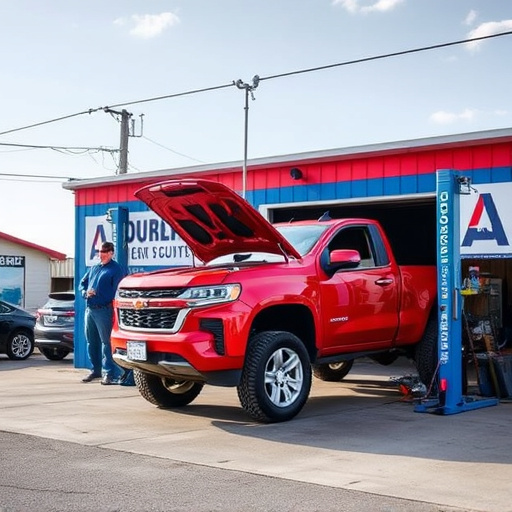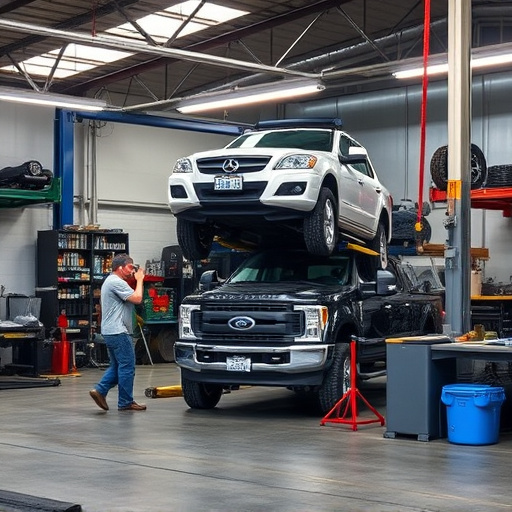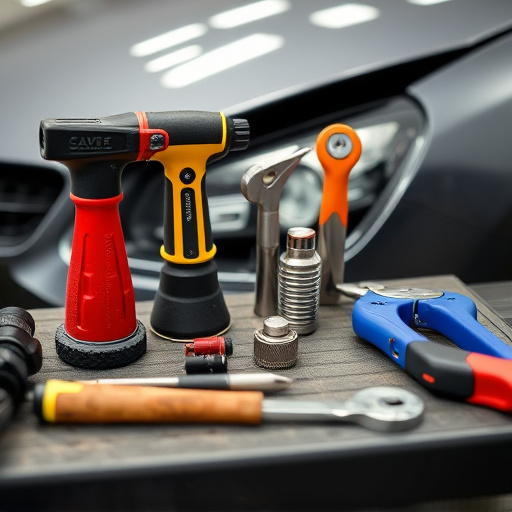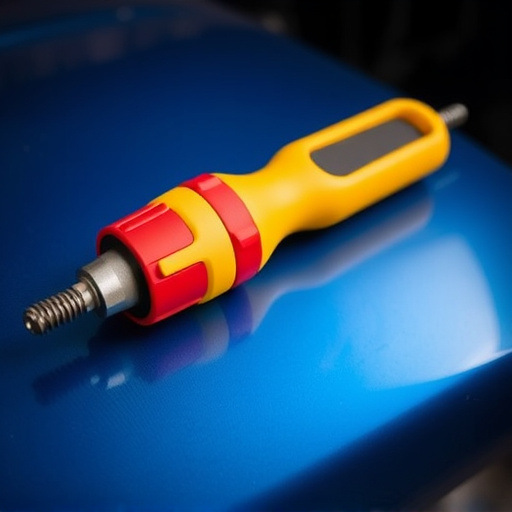Tesla's Over-the-Air (OTA) Diagnostic Support System remotely monitors and maintains vehicle health, offering software updates, error code diagnosis, and safety checks via cloud connectivity. Glitches may cause navigation delays or system failures, impacting performance and safety. A structured troubleshooting process involves checking software updates, network connection, error codes, and performing basic repairs to resolve OTA diagnostic issues with Tesla customer support as needed.
Tesla vehicles are renowned for their cutting-edge technology, including over-the-air (OTA) diagnostic support. This innovative feature allows remote vehicle monitoring and updates, enhancing performance and security. However, like any advanced system, it’s not immune to issues. In this article, we explore Tesla’s OTA diagnostic support system, uncover common connectivity problems, and provide troubleshooting best practices for effective assistance, ensuring your Tesla remains in peak condition.
- Understanding Tesla's Over-the-Air Diagnostic Support System
- Common Connectivity Issues and Their Impact on Tesla Vehicles
- Troubleshooting Steps and Best Practices for Effective Support
Understanding Tesla's Over-the-Air Diagnostic Support System

Tesla’s Over-the-Air Diagnostic Support System is a revolutionary feature that allows owners to access and manage their vehicle’s health remotely. This cutting-edge technology enables Tesla vehicles to receive software updates and diagnostic checks wirelessly, eliminating the need for frequent visits to automotive body shops or car body shops for routine maintenance. By leveraging cloud connectivity, the system detects potential issues, sends alerts to owners, and even facilitates remote troubleshooting, significantly enhancing convenience and vehicle performance.
The over-the-air diagnostic support isn’t just about fixing problems; it’s a proactive approach to vehicle care. Regular software updates can include improvements in safety features, efficiency enhancements, and new capabilities, essentially transforming the automotive body shop experience into a seamless digital journey. This innovative system positions Tesla at the forefront of modern connectivity, ensuring that owners have access to top-notch support without leaving their homes or offices.
Common Connectivity Issues and Their Impact on Tesla Vehicles

Tesla vehicles, known for their cutting-edge technology, can encounter connectivity issues that impact the overall driving experience. Common problems include difficulties with over-the-air updates and diagnostic support, which are essential for keeping the vehicle’s software up-to-date and ensuring optimal performance. When these connections fail, it can lead to various inconveniences. For instance, drivers might miss crucial software enhancements or even face critical safety concerns without access to real-time diagnostics.
These connectivity glitches can range from minor irritations, such as delayed navigation updates, to more serious matters like disabling essential vehicle systems. A failed connection may prevent the auto collision center from accessing necessary data for accurate damage assessments during a vehicle dent repair or collision repair services. As a result, owners might experience frustration, increased maintenance costs, and potential safety hazards without reliable Tesla over-the-air diagnostic support.
Troubleshooting Steps and Best Practices for Effective Support

When troubleshooting Tesla over-the-air diagnostic support issues, a systematic approach is key. Start by ensuring your vehicle’s software is up to date; frequent updates often include bug fixes and performance improvements. Verify connectivity to Wi-Fi or cellular networks, as stable connections are vital for successful over-the-air (OTA) updates and diagnostics. Check for any error codes or warning messages displayed on the vehicle’s touchscreen, which can provide valuable clues about the problem.
For persistent issues, consider basic automotive repair checks like inspecting and cleaning connectors, replacing faulty cables, or checking for loose connections. If the problem stems from a car restoration or auto collision center repair, ensure that all parts are properly calibrated and integrated into the vehicle’s system. Engaging with Tesla’s customer support or authorized service centers can also help pinpoint specific issues, leveraging their expertise in electric vehicle diagnostics and repairs.
Tesla’s over-the-air (OTA) diagnostic support system offers a convenient way to maintain and troubleshoot connectivity issues in their vehicles. While common problems may arise, such as software glitches or network connectivity failures, proactive troubleshooting steps can help owners effectively navigate these challenges. By following best practices and staying informed about updates, Tesla drivers can ensure optimal performance and a seamless ownership experience. Regularly updating firmware and utilizing remote diagnostic tools empower owners to address issues promptly, enhancing the overall reliability of their electric vehicles.














